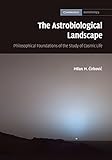Paper presented by title.
Five Roads to the Second Law
Milan Ćirković$^1$ and Jelena Dimitrijević$^2$
$^1$ Astronomical Observatory of Belgrade, Belgrade, Serbia; Future of Humanity Institute, Faculty of Philosophy, University of Oxford
$^2$ Faculty of Philosophy, University of Belgrade
Abstract We are witnessing a resurgence of interest in the problem of the origin of the thermodynamical arrow of time (a.k.a. the origin of the Second Law of thermodynamics or the entropy gradient or the thermodynamical temporal asymmetry, etc.). Although variations on the same theme existed since antiquity, the problem in its modern form was probably first formulated by Irish physicist Edward P. Culverwell in 1890, who concluded that the kinetic theory alone could never succeed in explaining the second law of thermodynamics. This has provoked Boltzmann (and Schuetz) to formulate one of the most interesting answers to the puzzle, an answer which, we hereby attempt to show, has remained interesting, in a particular reformulation, to this day. Before engaging in such reformulation, we present a modern taxonomy of the approaches to the explanation of the thermodynamical arrow of time. There are five possible roads to be taken, depending on the exact location of the origin of the asymmetry and the nature of physical mechanisms involved: two inherent solutions (statistical and dynamical), interventionism, Acausal-Particular approach of Price, and the reformulated Boltzmann-Schuetz mechanism. Surprisingly enough, it seems that most solutions include at least some new physics, on either micro- or macro-level. The preferred alternative (which we dub the Acausal-Anthropic approach) is based on accepting Boltzmann's statistical measure at its face value, and accomodating it within the multiverse concept. Notably, the special low-entropy initial conditions of our cosmological domain (“universe”) are best explained by embedding them in a wide spectrum of many possible initial conditions appearing among $O(10^{100})$ low-energy domains of the M-theory multiverse.

